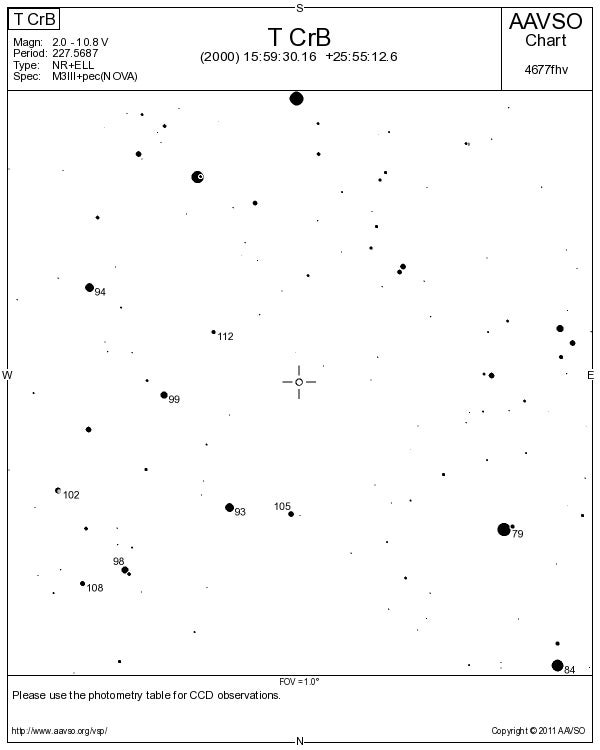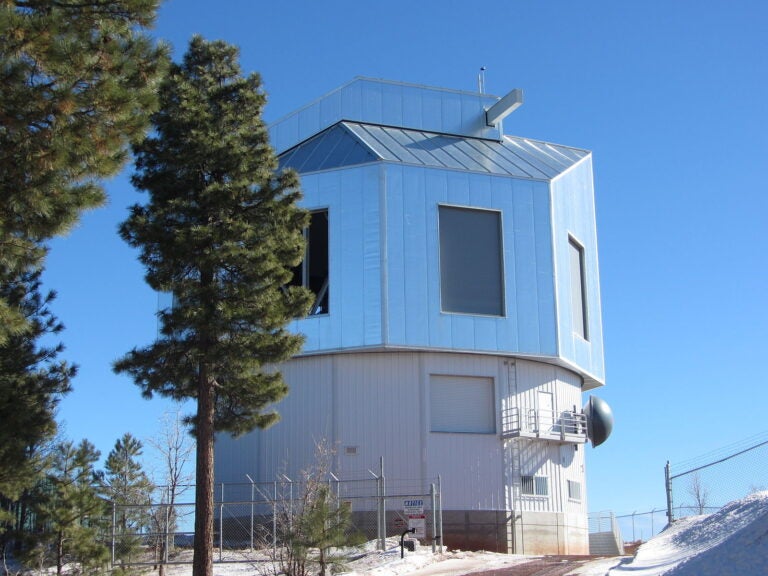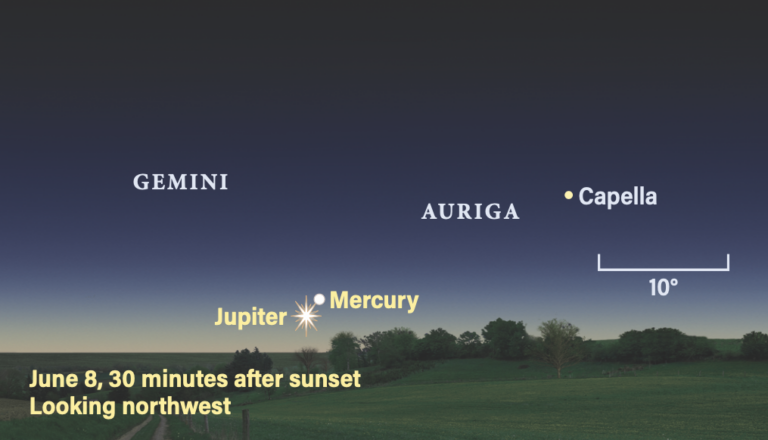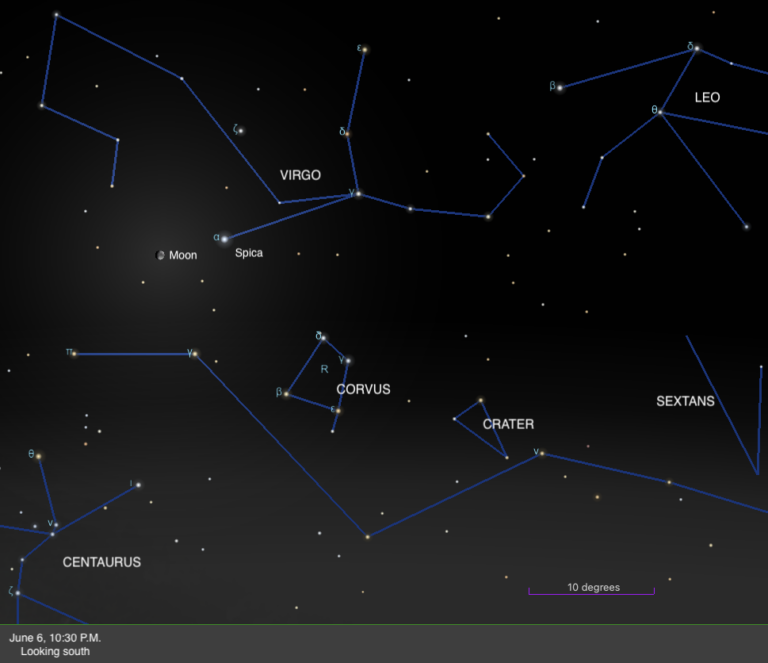Studying any variable star presents certain challenges. If you are just beginning your observing career, then the Mira stars are probably the best to start with. Their leisurely cycles of variation are spread over several months and can cover 7 or 8 magnitudes of dimming and brightening. They are surely the most forgiving of an inexperienced eye. You might want to try the cataclysmic variables as well; these stars are either in outburst or not — on or off — and are pretty easy to follow. As you gain more experience, eclipsing binaries and Orion variables might soon beckon. It depends on where your interests take you.
At its most basic level, variable-star observing is a simple task. First, locate the targeted variable in the sky. Next, find some nearby stars with known magnitudes, which will allow you to make your estimate. Simply compare the target to the known-magnitude stars and estimate how much brighter or dimmer it appears. Record your estimate over many nights, and you’ll be able to plot your target’s light curve to see how its brightness varies over time.
For example, as a first star, I choose T Coronae Borealis, an irregular recurrent nova that has seen two recent outbursts, in 1866 and 1946. To find it, locate the semicircle of stars that is Corona Borealis the Northern Crown and center on magnitude 4.2 Epsilon (ε) Coronae Borealis; T Coronae Borealis lies 1º south-southeast of Epsilon. Along the way, you’ll pass magnitude 8.1 SAO 84111 (24′ from Epsilon) and magnitude 9.3 SAO 84121 (25′ from SAO 84111). Your target, T CrB (also known as SAO 84129), lies 15′ south-southeast of SAO 84121. To estimate T Coronae Borealis’ brightness, you will almost certainly need only SAO 84121 and the magnitude 10.5 star just 6′ to its east. T typically shines around 10.0. However, perhaps one night, not too far in the future, this star will explode again, lighting up to magnitudes around 2.0 and 3.0, as it did about 150 and 50 years ago.
This basic process of locating a target star and nearby comparison stars of known magnitude is all you need to become a productive contributing member of the American Association of Variable Star Observers. After a few months of practice and data, you can begin submitting your findings to the group by following the directions on their website, www.aavso.org. They also offer tremendous support materials and information to help you with your observations.










